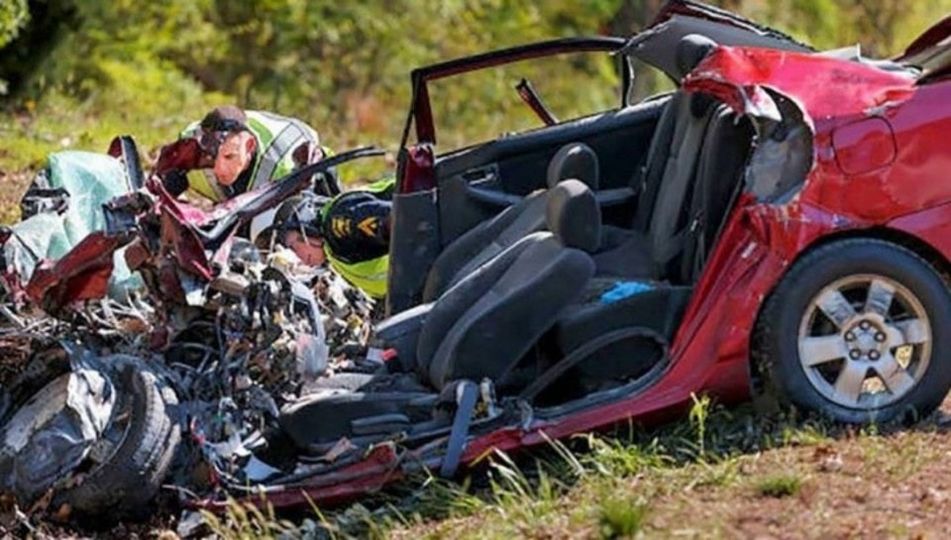At the age of 34, Courtney Ann Sanford was considered by many to be an experienced driver. On what seemed like an ordinary day, her life took an irreversible turn when a moment of distraction behind the wheel proved to be her undoing.
On July 6, 2024, Courtney was driving when her favorite song, “Happy” by Pharrell Williams, began playing on the radio. Overcome with joy, she decided to take a selfie and post it on Facebook, captioning it, “This song makes me happy!” Tragically, this brief distraction caused her to lose control of her vehicle. At approximately 60 km/h, her car slammed into a truck, veered into a ditch, and then crashed into a tree, resulting in a devastating fire that trapped her inside. Despite the best efforts of emergency responders, Courtney tragically succumbed to her injuries.
When Courtney’s family was alerted to the accident, they were confronted with the chilling realization that her final Facebook post had been made mere moments before the tragic incident. According to law enforcement, “The post was made at 8:33 AM. At 8:34 AM, we received the emergency call.” This heartbreaking timeline serves as a stark reminder of the grave consequences that can arise from even the briefest lapse in attention while behind the wheel.
Courtney’s story has sent shockwaves through the community, underscoring the pressing need for greater awareness and education surrounding the risks of distracted driving. As we mourn the loss of this talented and vibrant individual, it is crucial to heed her tragedy and work collectively to implement measures that can prevent such devastating occurrences in the future.
Distracted driving has become a growing epidemic, with the increasing prevalence of smartphones and the constant need to stay connected contributing to the problem. Courtney’s tragic demise serves as a poignant reminder that no text, post, or selfie is worth risking one’s life or the lives of others. The singular focus of a driver must remain on the road, for life’s precious moments can and should wait.
To combat the scourge of distracted driving, there is a pressing need to enhance driver education programs and strengthen legislative measures. By incorporating comprehensive training on the dangers of divided attention, as well as implementing stricter penalties for offenders, we can work to instill a strong culture of road safety and personal responsibility among drivers.
In addition to education and legislation, technological advancements can play a crucial role in mitigating the risks of distracted driving. Features such as hands-free interfaces, voice-activated controls, and automatic collision avoidance systems can help reduce the temptation and opportunity for drivers to engage in distracting behaviors while on the road.
Distracted driving is not solely the responsibility of the driver; passengers and the broader community also have a role to play in promoting road safety. By encouraging passengers to speak up and intervene when they notice unsafe driving behaviors, and by fostering a culture of collective accountability, we can work together to prevent tragedies like Courtney’s from occurring.
As we grapple with the devastating loss of Courtney, it is essential that we honor her memory by taking concrete steps to address the scourge of distracted driving. By raising awareness, implementing effective policies and technologies, and cultivating a shared sense of responsibility, we can work to ensure that no other lives are needlessly lost to the perils of diverted attention behind the wheel.
Courtney’s tragic story serves as a stark reminder of the grave consequences that can arise from even the briefest moment of distraction while driving. Her untimely passing has shed light on the urgent need for comprehensive action to combat the growing epidemic of distracted driving. By heeding the lessons of this heartbreaking incident and taking proactive steps to enhance driver education, strengthen legislation, and leverage technology, we can work to prevent such devastating occurrences in the future. Let us honor Courtney’s memory by committing ourselves to creating a safer, more responsible, and more attentive driving culture for all.







